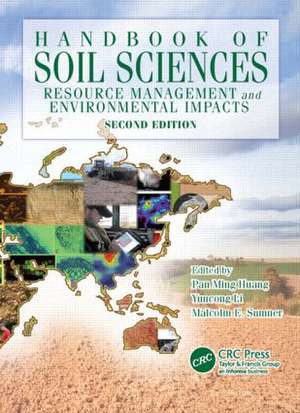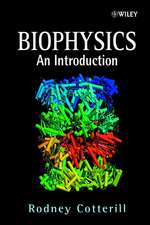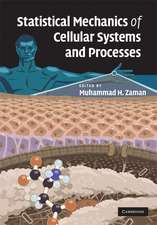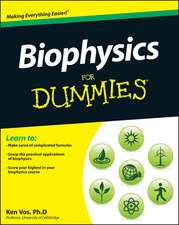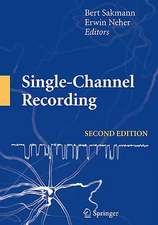Handbook of Soil Sciences: Resource Management and Environmental Impacts, Second Edition: Handbook of Soil Science
Editat de Pan Ming Huang, Yuncong Li, Malcolm E. Sumneren Limba Engleză Hardback – 17 noi 2011
Handbook of Soil Sciences: Resource Management and Environmental Impacts, Second Edition is the second of two volumes that form a comprehensive reference on the discipline of soil science. Completely revised and updated to reflect the current state of knowledge, this volume covers interfacial interactions between the physical, chemical, and biological regimes within the soil; the factors that control the availability of plant nutrients and microelements; interdisciplinary aspects of soil science, including salinity, sodicity, and soil erosion; and soil databases for assessing worldwide soil resources.
Critical elements addressed in each section include:
- Descriptions of concepts and theories
- Definitions, approaches, methodologies, and procedures
- Data in tabular and figure format
- Extensive references
Preț: 1237.71 lei
Preț vechi: 1684.52 lei
-27% Nou
Puncte Express: 1857
Preț estimativ în valută:
236.87€ • 246.38$ • 195.55£
236.87€ • 246.38$ • 195.55£
Carte tipărită la comandă
Livrare economică 12-26 aprilie
Preluare comenzi: 021 569.72.76
Specificații
ISBN-13: 9781439803073
ISBN-10: 1439803072
Pagini: 830
Ilustrații: 260 b/w images, 12 color images, 92 tables and at least 180 equations
Dimensiuni: 210 x 280 x 52 mm
Greutate: 2.02 kg
Ediția:Revizuită
Editura: CRC Press
Colecția CRC Press
Seria Handbook of Soil Science
Locul publicării:Boca Raton, United States
ISBN-10: 1439803072
Pagini: 830
Ilustrații: 260 b/w images, 12 color images, 92 tables and at least 180 equations
Dimensiuni: 210 x 280 x 52 mm
Greutate: 2.02 kg
Ediția:Revizuită
Editura: CRC Press
Colecția CRC Press
Seria Handbook of Soil Science
Locul publicării:Boca Raton, United States
Public țintă
Soil scientists; agronomists; environmental scientists/engineers; agricultural and environmental consultants; geologists; crop scientists; ecologists; and plant scientists.Cuprins
Soil Physical, Chemical, and Biological Interfacial Interactions. Soil Fertility and Plant Nutrition. Interdisciplinary Aspects of Soil Science. Soil Databases. Index.
Recenzii
"[The first volume] is a hefty tome separated into five sections: soil physics, chemistry, mineralogy, biology and biochemistry, and pedology. … Each chapter is a rich resource for choosing and discovering methodologies and understanding developments in soil science, and provides a database for equations needed in soil science. Non-soil scientists should not dismiss these handbooks since many chapters cross disciplines. … The list of authors for each chapter is truly impressive, with contributions from many eminent soil scientists. … The second volume contains a further 33 chapters broken into four parts: soil physical, chemical and biological interfacial interactions; soil fertility and plant nutrition; interdisciplinary aspects of soil science; and soil databases. Again, the calibre of the authors is exemplary and the comments made for the first volume apply equally to the second. … this is now my first ‘go to’ text for soil science and will be invaluable as a resource. I would highly recommend that libraries update their first edition and with these two new volumes."
—TJ Clough, Lincoln University, Canterbury, New Zealand, New Zealand Journal of Agricultural Research, 2013, Vol. 56, No. 1, 91-92.
—TJ Clough, Lincoln University, Canterbury, New Zealand, New Zealand Journal of Agricultural Research, 2013, Vol. 56, No. 1, 91-92.
Notă biografică
Dr. Pan Ming Huang was the professor of soil science emeritus at the University of Saskatchewan, Saskatoon, Saskatchewan, Canada, and served for 44 years in that institution. His research work has significantly advanced the frontiers of knowledge on the formation chemistry, nature, and surface reactivity of mineral colloids, organic matter, and organomineral complexes in soils and sediments and their role in the dynamics, transformations, and fate of nutrients, toxic metals, and xenobiotics in terrestrial and aquatic environments. His research findings, embodied in well over 300 refereed scientific publications, are fundamental to the development of sound strategies for managing land and water resources in the Earth’s critical zone.
Dr. Yuncong Li is the University of Florida Research Foundation (UFRF) professor of soil science in the Department of Soil and Water Science at the Tropical Research and Education Center, Institute of Food and Agricultural Sciences (IFAS), University of Florida in Homestead. He is also an affiliated professor at the University of Florida’s Center for Tropical Agriculture, Hydrologic Sciences Academic Cluster, School of Natural Resources and Environment, and Water Institute. His research and extension program focuses on water and soil quality monitoring, assessment and remediation, management practices to improve nutrient use efficiency, and nutrient cycling in soils/sediments. He has authored or coauthored over 150 research papers, 70 extension articles, and 15 book chapters. He recently edited a book, Water Quality Concepts, Sampling, and Analyses (CRC Press, 2010). He serves as an associate editor for Critical Reviews in Environmental Science and Technology and Communications in Soil Science and Plant Analysis.
Dr. Malcolm E. Sumner is the Regents’ Professor of Environmental Soil Science Emeritus in the Department of Crop and Soil Sciences at the University of Georgia, Athens. His published works cover a wide range of topics, including subsoil acidity, the agricultural uses of gypsum, diagnosis of yield-limiting factors, beneficial use of anthropogenic wastes, and transport of nutrients in soils. A widely respected author, Dr. Sumner’s works include Soil Acidity (Springer-Verlag, 1991), Soil Crusting: Chemical and Physical Processes (Lewis Publishers, 1992), Suelos de la Agroindustria Cafetalera de Guatemala (University of Georgia, 1994), Distribution, Properties and Management of Australian Sodic Soils (CSIRO Publications, 1995), Sodic Soils: Distribution, Properties, Management, and Environmental Consequences (Oxford University Press, 1998), and the Handbook of Soil Sciences (CRC Press, 1999). He has authored or coauthored over 350 scientific papers, including 220 refereed journal articles, and has contributed chapters to over 30 books.
Dr. Yuncong Li is the University of Florida Research Foundation (UFRF) professor of soil science in the Department of Soil and Water Science at the Tropical Research and Education Center, Institute of Food and Agricultural Sciences (IFAS), University of Florida in Homestead. He is also an affiliated professor at the University of Florida’s Center for Tropical Agriculture, Hydrologic Sciences Academic Cluster, School of Natural Resources and Environment, and Water Institute. His research and extension program focuses on water and soil quality monitoring, assessment and remediation, management practices to improve nutrient use efficiency, and nutrient cycling in soils/sediments. He has authored or coauthored over 150 research papers, 70 extension articles, and 15 book chapters. He recently edited a book, Water Quality Concepts, Sampling, and Analyses (CRC Press, 2010). He serves as an associate editor for Critical Reviews in Environmental Science and Technology and Communications in Soil Science and Plant Analysis.
Dr. Malcolm E. Sumner is the Regents’ Professor of Environmental Soil Science Emeritus in the Department of Crop and Soil Sciences at the University of Georgia, Athens. His published works cover a wide range of topics, including subsoil acidity, the agricultural uses of gypsum, diagnosis of yield-limiting factors, beneficial use of anthropogenic wastes, and transport of nutrients in soils. A widely respected author, Dr. Sumner’s works include Soil Acidity (Springer-Verlag, 1991), Soil Crusting: Chemical and Physical Processes (Lewis Publishers, 1992), Suelos de la Agroindustria Cafetalera de Guatemala (University of Georgia, 1994), Distribution, Properties and Management of Australian Sodic Soils (CSIRO Publications, 1995), Sodic Soils: Distribution, Properties, Management, and Environmental Consequences (Oxford University Press, 1998), and the Handbook of Soil Sciences (CRC Press, 1999). He has authored or coauthored over 350 scientific papers, including 220 refereed journal articles, and has contributed chapters to over 30 books.
Descriere
This volume provides an interdisciplinary understanding of soil science practices based on a rigorous, complete, and up-to-date treatment of the subject matter compiled by leading scientists. Completely revised and updated, this second edition of a bestseller covers interfacial interactions between the physical, chemical, and biological regimes within the soil; the factors that control the availability of plant nutrients and microelements; interdisciplinary aspects of soil science, including salinity, sodicity, and soil erosion; and soil databases for assessing worldwide soil resources. Chapters include concepts and theories, definitions, approaches, methodologies and procedures, data in tabular and figure format, and extensive references.
